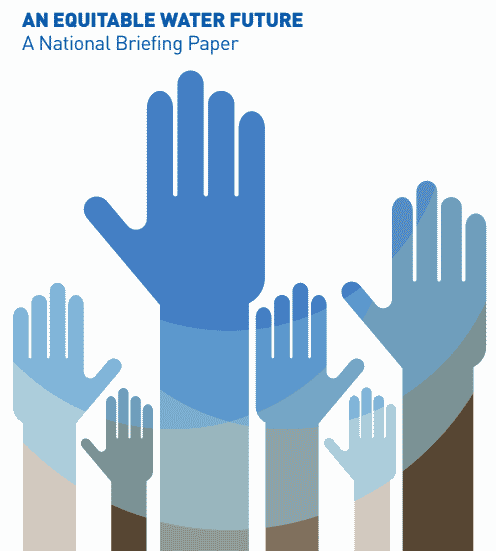What is water equity? What is environmental justice? These concepts are inextricably linked, and are used by government agencies, water sector groups, and environmental justice advocates in subtly different ways. These terms did not originate in a vacuum; the environmental justice movement originated in the 1950s, championed by Black Americans and evolving alongside the civil rights movement. In recent years, equity in drinking water and water resource recovery processes have risen to the forefront of policy discussions in the wake of lead crises in Flint, Michigan, and Newark, New Jersey. As social justice movements shift and grow, these concepts are also evolving and growing. As water professionals, it is worthwhile to see how leaders in the water sector define water equity and justice, and how we might expect to see them manifested in policy.
Federal Environmental Equity and Justice Trajectory
After many years of advocacy from environmental justice activists and growing concerns from Black members of Congress, in 1992 the U.S. Environmental Protection Agency (USEPA) established the Office of Environmental Equity. This office, renamed the Office of Environmental Justice in 1994, defined environmental justice as:
“… fair treatment and meaningful involvement of all people regardless of race, color, national origin or income, with respect to the development, implementation and enforcement of environmental laws, regulations and policies.”
In this definition, “fair treatment” means no group of people should bear “a disproportionate share of…negative environmental consequences.” This definition, it is important to note, has been criticized by some environmental justice advocates who point out that fair treatment amounts to merely redistributing everyone’s “fair share” of environmental burdens, instead of striving to eliminate the systemic root causes of environmental inequalities through technological advancement, policy changes or pollution reduction.
Although the Office of Environmental Justice has existed since the 1990s, the federal government’s emphasis on equity, justice and water has accelerated in recent years. In 2020, the Biden administration established a White House Environmental Justice Advisory Councilw and created the Justice40 initiative, which commits 40% of relevant federal investments to disadvantaged communities. In November 2021, the Infrastructure Investment and Jobs Act (Bipartisan Infrastructure Law) was signed into law, prompting agencies like the USEPA to quickly begin preparing for broad and sweeping increases to water infrastructure funds.
In December 2021, USEPA Administrator Michael Regan issued a letter to governors directing them to prioritize the needs of disadvantaged communities, writing that:
“… every state in America has disadvantaged communities – rural, urban, suburban – that have deeply-rooted water challenges, whether it is too much, too little or poor-quality water… through the Bipartisan Infrastructure Law, states have an unprecedented opportunity to correct this disparity.”
Throughout his letter, Regan refers to environmental justice communities, and the “systemic barriers” that environmental justice communities disproportionately face. As further guidance is released on Justice40 later in 2022, we can expect to see more information on how environmental justice and equity is viewed, measured, and understood in terms of water infrastructure.
A New Vision for Water Equity from the US Water Alliance
Beyond the USEPA, how do other water sector groups define water equity? The US Water Alliance is a leading water sector advocacy group with an established framework explicitly for water equity. In their 2017 national policy brief, An Equitable Water Future, the US Water Alliance states that water equity:
“… occurs when all communities have access to safe, clean, affordable drinking water and wastewater services, share in the economic, social, and environmental benefits of water systems, and are resilient in the face of floods, drought and other climate risks.”

Cover page from the 2017 national policy brief from the US Water Alliance, “An Equitable Water Future.”
These three pillars— access to safe and affordable water, shared social benefits and resiliency to climate risks—are the backbone to the US Water Alliance’s strategies and approaches. Informed by the environmental justice movement, this framework highlights the nexus between disparities in clean water access, infrastructure and workforce trends, and climate change to bring a much-needed sense of urgency to these deeply interconnected issues.
The momentum around water equity continues to grow. In 2018, out of a shared desire to address disparities in access to clean water as well as disparities in climate change vulnerability, a diverse group of water organizations established the Water Equity and Climate Resiliency Caucus. Led by PolicyLink and the Gulf Coast Center for Law and Policy, the caucus has focused on securing safe and affordable drinking water for all communities, advancing workforce development and training in low-income communities, and supporting communities affected by rising water, flooding and drought. The caucus also put pressure on the Biden administration to include both men and women of minority groups in their cabinet and agency positions. Ultimately, Radhika Fox, a caucus member and former CEO of the US Water Alliance, was appointed to head the Office of Water at USEPA.
Reflections on Water Equity and Environmental Justice
As water professionals, reflecting on the meaning and history behind environmental justice and equity, especially as the movement expands and grows, will allow us to move into the future with the communities we serve in mind. We can also acknowledge that today’s exciting and promising water equity efforts have been driven by decades of advocacy by environmental justice advocates and civil rights leaders. In his Letter from a Birmingham Jail, Martin Luther King writes, “Injustice anywhere is a threat to justice everywhere.”
To learn more about the environmental justice effort, you can consult the websites and publications of the organizations below, in addition to those mentioned previously in this article.
- WE ACT for Environmental Justice (weact.org)
- UPROSE: New York’s oldest Latino Community-based organization (uprose.org)
- PUSH Buffalo: People United for Sustainable Housing (pushbuffalo.org)
